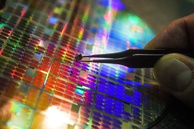In a recent article, Foreign Affairs - a New York-based journal of international relations, predicted the inevitability of an "economic arms race" between the US and China. This might primarily affect the production of microelectronics, and Washington has already shown its strong desire to use any means available, including non-market ones, to win this race – a 100-percent American tactic to come on top of it in everything, no matter what, if possible, at the expense of others.
Recently, the US Department of Commerce rolled out a raft of new restrictions on the sale of semiconductor technologies to China, which will affect products "used for the production of supercomputers and semiconductors." Such products, supplied to 30 Chinese companies, are now subject to licensing.
In this regard, The New York Times wrote, “Perhaps more importantly, the Biden administration has also imposed sweeping international restrictions that will prevent companies from selling anywhere in the world microchips used in artificial intelligence and supercomputing in China if these chips are made using American technology, software or equipment."[1]
At the same time, the US authorities agreed with their partners, including Japan and the Netherlands, to tighten screws on the export of microchips to China. The main suppliers of products and related services are, among others, the Japanese company Tokyo Electron and the Dutch firm ASML Holding.
The Chinese responded to Washington’s export control measures by filing a lawsuit against the United States at the World Trade Organization (WTO), accusing the US authorities of a broad interpretation of measures to protect national security by using unfair methods against overseas enterprises and engaging in "technological intimidation," the Chinese Foreign Ministry spokesperson Wang Wenbin said. [2]
All this didn’t start yesterday though. In 2015, China adopted the Made in China 2025 (MIC2025) program with an eye to shifting from making labor-intensive products to high-tech ones, and creating the country’s own products and technologies, including electronics and component manufacturing. When it became clear by 2018 that the program was working successfully, Washington considered it as a threat to its national security. It was exactly when the first signs of the US-China trade war started to emerge, resulting in a clampdown on Huawei, etc. All subsequent US sanctions targeted Chinese businesses involved in the MIC2025 program. As for China, it protects its interests by sticking to economic methods only.
This year, President Joe Biden signed into law a $52.7 billion bailout package for US semiconductor manufacturers to strengthen their competitive edge against China. Beijing responded with a $143 billion support package for the country’s semiconductor industry and research activities, which will keep the People’s Republic supplied with microchips despite US sanctions. The money will be disbursed over a period of five years, starting in the first quarter of 2023, with most of it earmarked to subsidize the purchase of semiconductor equipment produced by Chinese companies. [3]
The key question is whether the US restrictions are able to curb or block China's technological progress in the field of microelectronics. For example, a year ago, China’s largest microelectronics company SMIC announced plans to build the country's largest factory worth $9 billion. SMIC is going ahead of schedule having launched the production of 14 nanometer (nm) microchips, plus it is already mastering the production of 7 and 5nm microchips too (Taiwanese TSMC and Korean SAMSUNG switched to 4nm). Experts says that images of an "opened" microchip show a certain similarity between the technologies used by SMIC and TSMC. The truth is that SMIC has been able to do without imported equipment, which the US authorities banned from supplying to China. [4]
Moreover, China has its own unique developments. Recently, the Chinese government banned the export of Loongson processors based on its own architecture, which is considered strategically important as it is used in China's military-industrial complex. However, computers and other consumer electronics using the same processor are available for export.
Some Russian electronics manufacturers, which have been testing Made in China data processors believe that if parallel import channels are blocked, these could replace the world's most widely used ones made by Intel. However, it would still be premature to surmise that Russia could suffer in the US-Chinese “microelectronics race” (unless it seriously undermines parallel imports).
In general, many experts, both Chinese and foreign, tend to believe that despite certain problems, US sanctions indirectly contribute to the development of modern Chinese innovations and technologies. The MIC2025 program has gained such momentum, and such resources have been invested in its implementation, that there is no stopping it now. The United States can slow it down with all kinds of sanctions and restrictions, but it will not be able to completely block the further development of China’s domestic innovations project.
The lesson that Russia can learn from this is that as much as you can use Chinese-made microelectronics and parallel imports, you should rely mainly on your own strengths and capabilities and channel all your resources into important areas (which we have), just like our Chinese partners do.
The views of the author may differ from the position of the Editorial Board.
[1] “US imposes additional restriction on semiconductor exports to China,” https://www.interfax.ru/world/866908
[2] “China accuses US of technological intimidation,” https://lenta.ru/news/2022/12/14/china_us_accuse/
[3] “China counters US sanctions with $143 billion investments in microelectronics,” https://rg.ru/2022/12/14/kitaj-protivopostavit-amerikanskim-sankciiam-143-mlrd-dollarov-investicij-v-mikroelektroniku.html
[4] “Import substitution Chinese way: the Heavenly Empire launches production of modern 14 nm microchips. State program is working,” https://habr.com/ru/company/selectel/blog/684094/
read more in our Telegram-channel https://t.me/The_International_Affairs

 11:19 21.12.2022 •
11:19 21.12.2022 •























